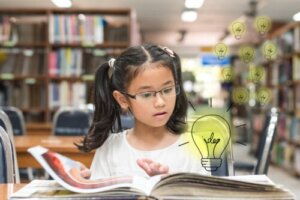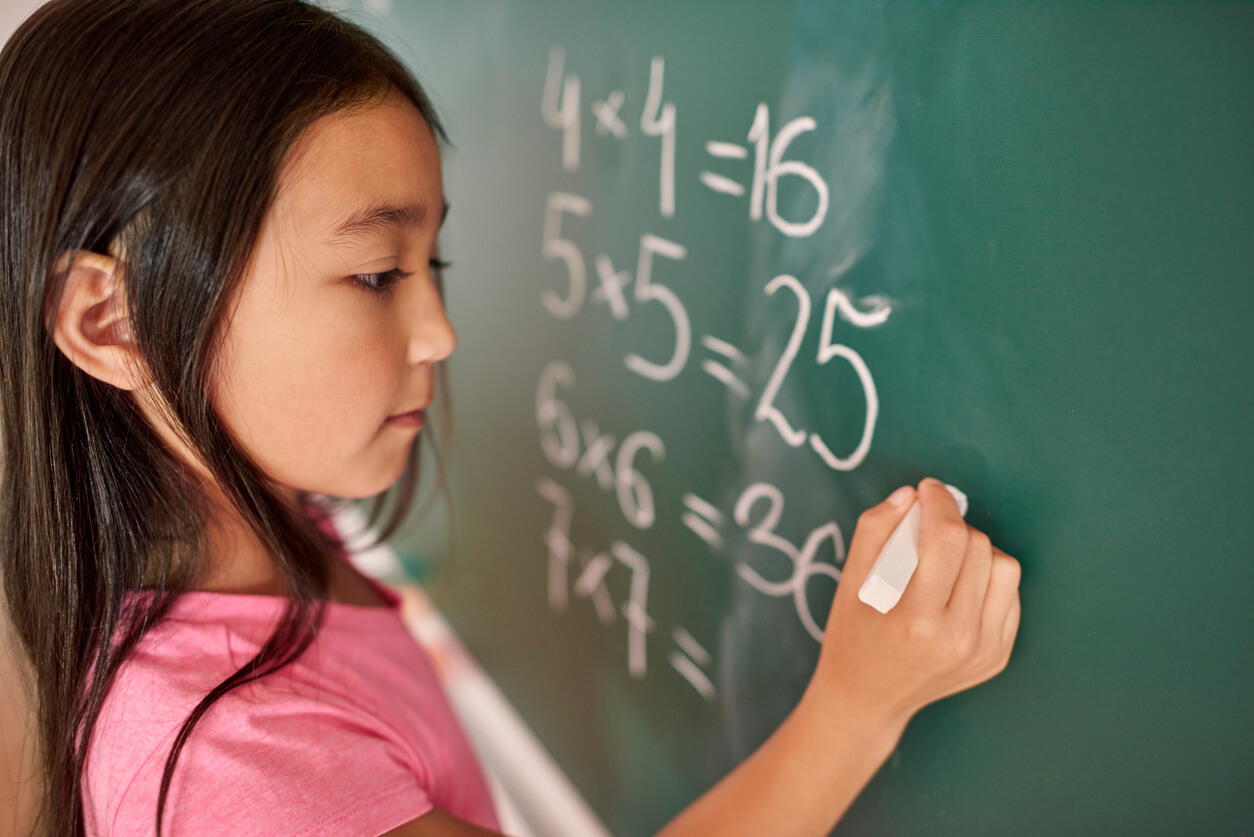Meta-Learning: The Importance of Learning About Learning


Written and verified by the psychologist Elena Sanz Martín
From the moment a child is born, their parents or educators strive to teach them everything they need to know. They seek to provide them with all the information they need, explain the world, and show them all kinds of concepts. However, there’s an even more important element that’s often overlooked. Meta-learning, or learning about learning, is a skill that will help your child learn more efficiently.
Beyond knowing about science, literature, music, or languages, what a child really needs are tools that allow them to make learning meaningful in any field. How many times do children study for hours and end up not understanding or remembering what they read? This isn’t only tedious and demotivating for them, but also ineffective. This is why meta-learning is so important.
What is meta-learning?
This concept was defined in 1984 by Novak and Gowin, two education researchers committed to achieving meaningful learning in students. This implies that knowledge isn’t received passively, but is constructed by manipulating concepts and reflecting on them until they’re assimilated and integrated effectively.
In this regard, and in order to achieve this purpose, meta-learning is emphasized as an indispensable element. This refers to the ability to evaluate one’s own learning process and take control over it in order to make it conscious. In short, it means “learning to learn”.
The purpose of this isn’t only that the student understands the material, but also that they’re able to apply critical thinking to it and relate it to what they already knew previously. In addition, the whole process should be pleasant, comfortable, and effective.

How can the student apply this skill?
Meta-learning can be used to solve problems, perform tasks, or assimilate information of any kind. And, in applying it, the learner should ask themself the following questions.
What am I going to learn?
It’s important that learners know the subject matter in depth and not just learn automatically. Memorizing without understanding or always following the teacher’s instructions the same way isn’t enough, as the knowledge isn’t consolidated and therefore can’t be used in the future. Therefore, they must become familiar with the syllabus and the way in which knowledge is structured in order to be able to approach it properly.
How am I going to do it?
As we said, learning to learn has to do with taking control over the learning process itself, planning it, and giving it order. Therefore, students can take care of organizing aspects such as where the study space will be, when they’ll study, and how much time they’ll dedicate to the task.
Also, they can analyze their mood and motivation and observe if they’re suitable to start the work. Perhaps if they’re feeling anxious or worried, they’ll need to take a few minutes to breathe or relax first. Or, perhaps, if they’re unmotivated, playing a short round of a game they’re interested in will help them to get active.
What elements and tools do I need and can I use?
This is a key point, as it’s about the child being aware of and having various methods, tools, and strategies to make the learning process more effective. This includes techniques such as highlighting, outlines, concept maps, and mnemonic rules. It’s important for the child to know several of them, to know which ones work best for them, and in which contexts.

How is the process going?
Meta-learning implies reflecting on the learning process at all times. This includes not only planning it initially but also evaluating it periodically. The student must be able to identify in a timely manner the mistakes they make or the strategies that don’t work, which will prevent the frustration of making an effort that doesn’t bear fruit.
But for this to happen, the child must get used to monitoring their progress. They must give due importance to this process of reflecting and analyzing if the times and techniques chosen have been appropriate or if there’s any emotion that gets in the way of being able to learn.
Is there anything to improve or modify?
Finally, changes and improvements can also be implemented. For example, if the learner detects that they don’t understand a word or concept, they should stop and resolve that issue before continuing. Similarly, they may identify that they need a break and should give themself permission to do so. Or perhaps they detect that they’re spending too much time on the task and should change their strategy.
A necessary skill for every student
Thanks to meta-learning, children can obtain better academic results, optimize their study process, and feel more motivated. But it’s also a tool that they’ll be able to use in the future when approaching any new learning, thus providing them with great independence and autonomy.
However, this skill must be taught, as it doesn’t come innately. Therefore, we have to guide students on how to monitor and take charge of their learning process, how to work through each step, and make the whole thing a habit. This may require time, patience, and perseverance on the part of parents and educators. However, once integrated, it will be one of the best resources the child will have in the future.
From the moment a child is born, their parents or educators strive to teach them everything they need to know. They seek to provide them with all the information they need, explain the world, and show them all kinds of concepts. However, there’s an even more important element that’s often overlooked. Meta-learning, or learning about learning, is a skill that will help your child learn more efficiently.
Beyond knowing about science, literature, music, or languages, what a child really needs are tools that allow them to make learning meaningful in any field. How many times do children study for hours and end up not understanding or remembering what they read? This isn’t only tedious and demotivating for them, but also ineffective. This is why meta-learning is so important.
What is meta-learning?
This concept was defined in 1984 by Novak and Gowin, two education researchers committed to achieving meaningful learning in students. This implies that knowledge isn’t received passively, but is constructed by manipulating concepts and reflecting on them until they’re assimilated and integrated effectively.
In this regard, and in order to achieve this purpose, meta-learning is emphasized as an indispensable element. This refers to the ability to evaluate one’s own learning process and take control over it in order to make it conscious. In short, it means “learning to learn”.
The purpose of this isn’t only that the student understands the material, but also that they’re able to apply critical thinking to it and relate it to what they already knew previously. In addition, the whole process should be pleasant, comfortable, and effective.

How can the student apply this skill?
Meta-learning can be used to solve problems, perform tasks, or assimilate information of any kind. And, in applying it, the learner should ask themself the following questions.
What am I going to learn?
It’s important that learners know the subject matter in depth and not just learn automatically. Memorizing without understanding or always following the teacher’s instructions the same way isn’t enough, as the knowledge isn’t consolidated and therefore can’t be used in the future. Therefore, they must become familiar with the syllabus and the way in which knowledge is structured in order to be able to approach it properly.
How am I going to do it?
As we said, learning to learn has to do with taking control over the learning process itself, planning it, and giving it order. Therefore, students can take care of organizing aspects such as where the study space will be, when they’ll study, and how much time they’ll dedicate to the task.
Also, they can analyze their mood and motivation and observe if they’re suitable to start the work. Perhaps if they’re feeling anxious or worried, they’ll need to take a few minutes to breathe or relax first. Or, perhaps, if they’re unmotivated, playing a short round of a game they’re interested in will help them to get active.
What elements and tools do I need and can I use?
This is a key point, as it’s about the child being aware of and having various methods, tools, and strategies to make the learning process more effective. This includes techniques such as highlighting, outlines, concept maps, and mnemonic rules. It’s important for the child to know several of them, to know which ones work best for them, and in which contexts.

How is the process going?
Meta-learning implies reflecting on the learning process at all times. This includes not only planning it initially but also evaluating it periodically. The student must be able to identify in a timely manner the mistakes they make or the strategies that don’t work, which will prevent the frustration of making an effort that doesn’t bear fruit.
But for this to happen, the child must get used to monitoring their progress. They must give due importance to this process of reflecting and analyzing if the times and techniques chosen have been appropriate or if there’s any emotion that gets in the way of being able to learn.
Is there anything to improve or modify?
Finally, changes and improvements can also be implemented. For example, if the learner detects that they don’t understand a word or concept, they should stop and resolve that issue before continuing. Similarly, they may identify that they need a break and should give themself permission to do so. Or perhaps they detect that they’re spending too much time on the task and should change their strategy.
A necessary skill for every student
Thanks to meta-learning, children can obtain better academic results, optimize their study process, and feel more motivated. But it’s also a tool that they’ll be able to use in the future when approaching any new learning, thus providing them with great independence and autonomy.
However, this skill must be taught, as it doesn’t come innately. Therefore, we have to guide students on how to monitor and take charge of their learning process, how to work through each step, and make the whole thing a habit. This may require time, patience, and perseverance on the part of parents and educators. However, once integrated, it will be one of the best resources the child will have in the future.
All cited sources were thoroughly reviewed by our team to ensure their quality, reliability, currency, and validity. The bibliography of this article was considered reliable and of academic or scientific accuracy.
- Díaz, J. R. (2002). Los mapas conceptuales como estrategia de enseñanza y aprendizaje en la educación básica-propuesta didáctica en construcción. Educere, 6(18), 194-203. https://www.redalyc.org/pdf/356/35601811.pdf
- Espinosa, A., Mata, C., Mojón, C., & Rivera, R. (2018). TDAH: Guía de apoyo al estudio. Fundación INGADA. https://www.fundacioningada.net/presentacion_guia_apoyo_estudio_es.html
- Novak, J. & Gowin, B. (1988) Aprendiendo a aprender. Barcelona: Ediciones Martínez Roca
This text is provided for informational purposes only and does not replace consultation with a professional. If in doubt, consult your specialist.








